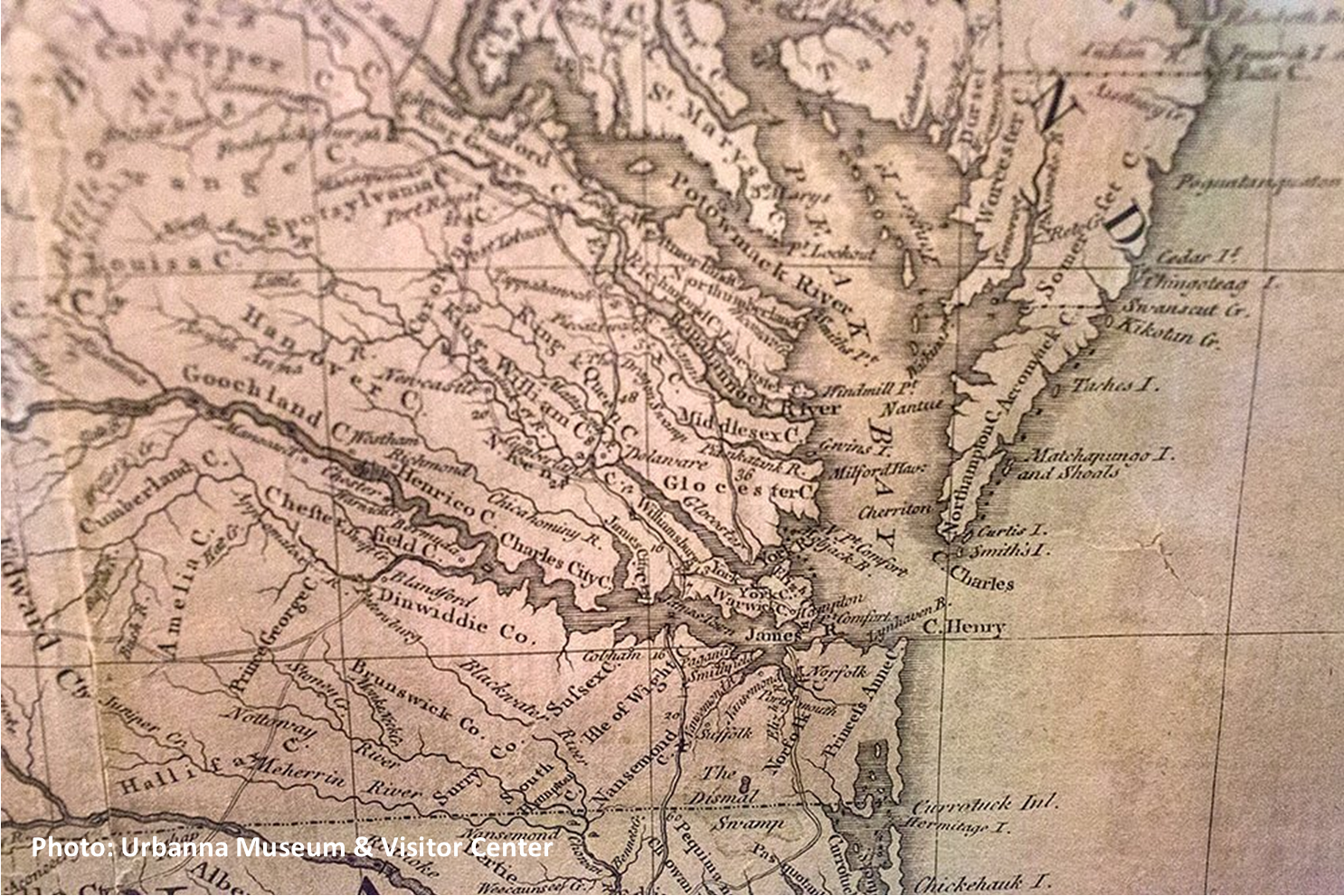Virginia’s water trails are not just about paddling. When you find yourself paddling a remote trail, with few signs of modern development along the shorelines, it’s almost as though you’ve stepped back in time, and you’re experiencing coastal Virginia as it was 50, 100, or over 200 years ago. And while coastal Virginia has some nationally recognized historic sites – think Jamestown Island, George Washington birthplace – this region is also packed with small museums that were all established to tell the stories of the history and culture of rural, coastal Virginia.
Northern Neck
The Northern Neck is actually designated as a National Heritage Area, and for good reason. This region has national, historic significance, from Algonquin tribes to American presidents. Visiting places like the George Washington birthplace, Menokin, and Stratford Hall will surely impress any visitor to the Northern Neck. But there are a handful of lesser-known historic sites that are well worth highlighting.
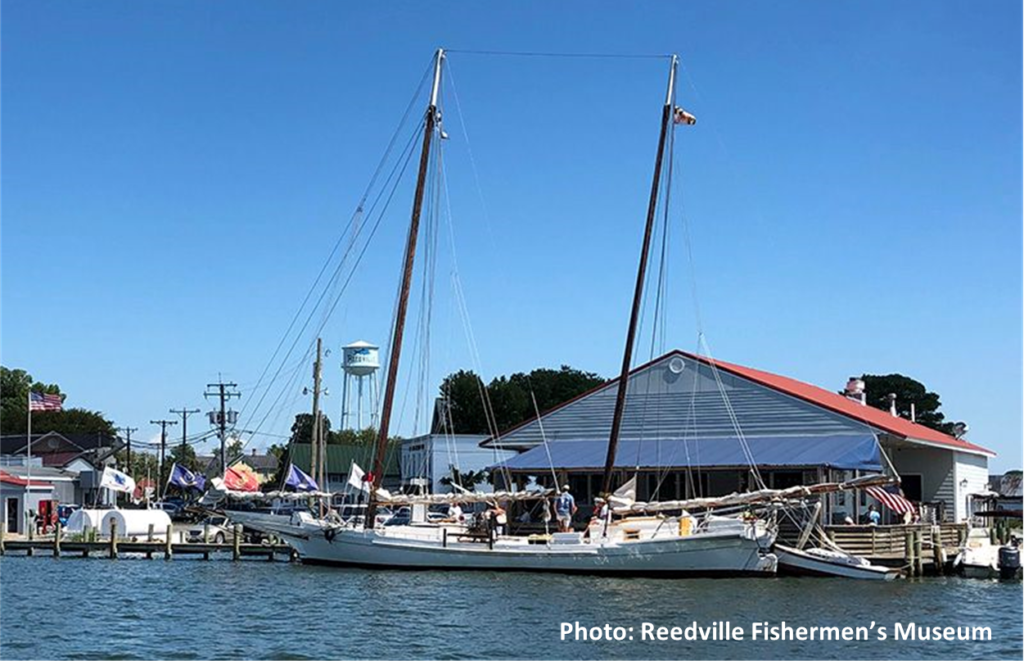
The Reedville Fishermen’s Museum is located in the oldest house in the town Reedville, situated almost as far east as you can go on the Northern Neck. It may come as a surprise to most visitors that Reedville is actually one of the biggest ports for the landing of commercial fish in the country! The museum tells the story of Captain Elijah Reed, a man that purchased land along Cockrell Creek and established a thriving fishing operation. It also houses two vessels that are on the National Register of Historic Places – the Elva C and Claud Somers. Other exhibits include a replica of the style of boat John Smith originally used to explore the Chesapeake, the Northern Neck Railroad & Power Company (complete with model trains), a boat building shop, and a 1920s pilot house.
Speaking of Captain John Smith, he is said to be the first European to see the Northern Neck’s Lancaster County, coming ashore around what is now Morratico, where he was met by members of the Moraughtacund tribe. The Morratico Waterfront Museum does an excellent job of interpreting the cultural history of the people that made their lives on the river in this area, from the Moraughtacund Indians of the Algonquin Nation to European settlers, and a time in the late 19th century when Morratico was a bustling village of agricultural and fishing commerce.
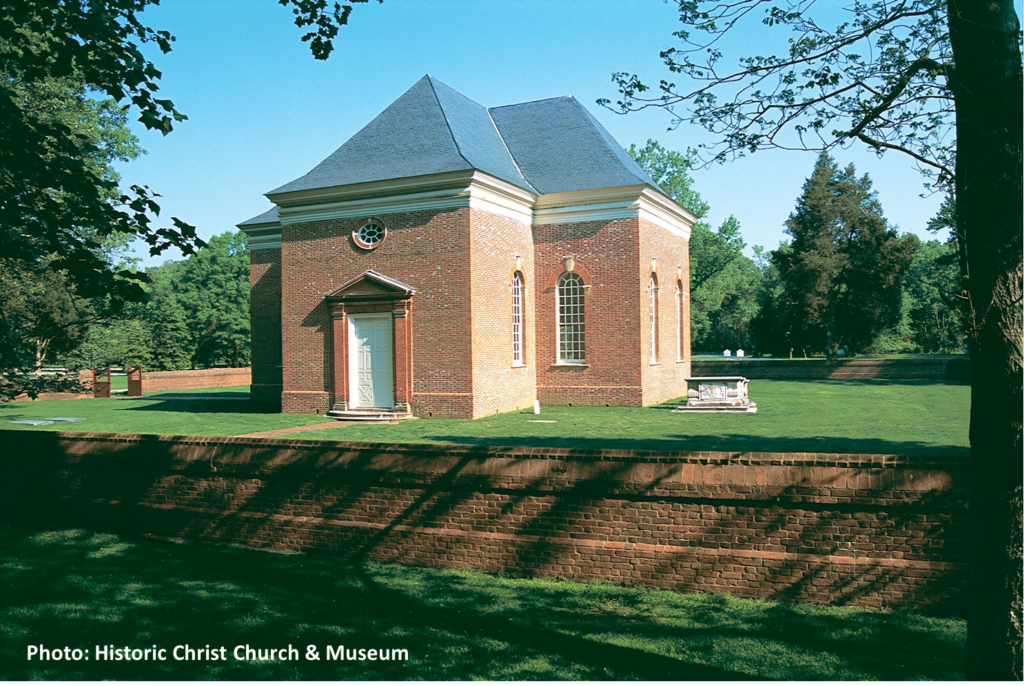
Take a step back to 1735 and admire the architectural masterpiece of Christ Church, built by free, indentured, and enslaved workers, and is considered to be one of the most “visually stunning buildings in America.” The Historic Christ Church & Museum is a hub for education and historical research, and has ongoing projects in historic preservation and archeology, all with a mission of preserving Christ Church and learning about the Carter family, dating back to the early 17th century.
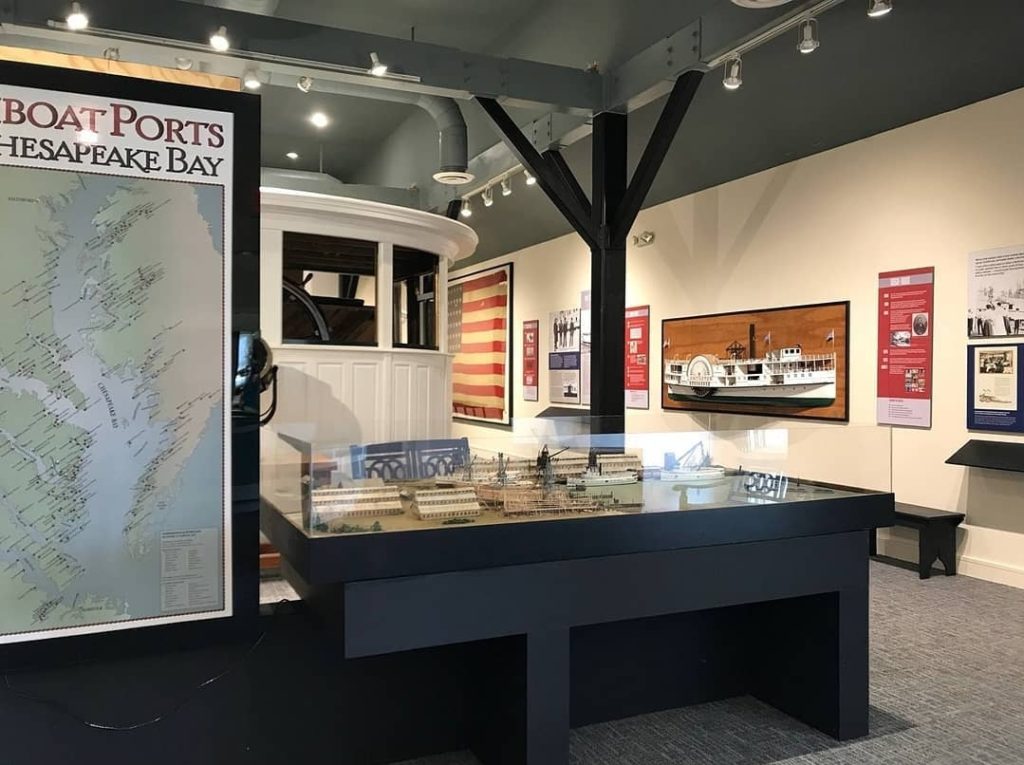
To get a taste of the 19th and early 20th century steamboat era of the Chesapeake Bay, head to the Steamboat Era Museum, located in Irvington. Considering the large size and number of Chesapeake steamboats that once moved up and down the bay, it’s hard to believe that the largest surviving artifact of this era is the original pilothouse of the steamboat, Potomac. The pilothouse is the star exhibit of the museum. Learn about the floating theaters and casinos, and how they impacted the lives of those on the Northern Neck. One of the most fascinating stories this museum tells is about the life of Hansford Bayton, an African American steamboat captain and successful entrepreneur that sailed several steamboats along the Rappahannock in the late 19th and early 20th centuries. Be sure to schedule a visit in mid-September (beautiful paddling weather too!) for the museum’s annual crab festival.
Middle Peninsula
Deltaville, Virginia is known as the boat building capital of the Chesapeake, and the Deltaville Maritime Museum exists to share that piece of Chesapeake heritage. The museum houses a boat building workshop where you can see craftsmen creating various models of Chesapeake vessels. You can even sign up for a family boat building workshop! You can also explore local waters aboard a restored deadrise, or take a walk through the nature trails of Holly Point Park. The museum even hosts live music events throughout the summer.
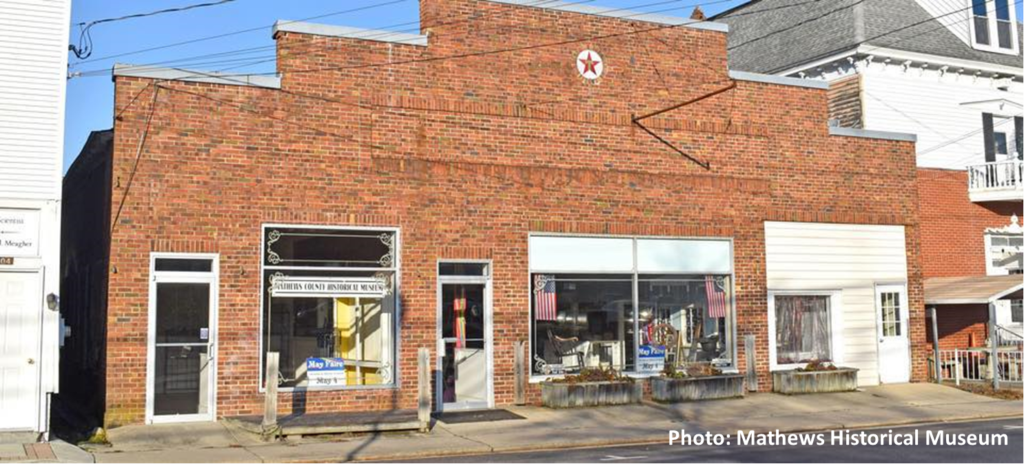
Mathews County, known to most of our readers as a place with stunning water trails, is named after Thomas Mathews, a general during the Revolutionary War. The Mathews Historical Museum is ever evolving and growing, with new artifact donations from the surrounding communities, to help tell the cultural history of the region, highlighting maritime and watermen’s history.
The Urbanna Museum & Visitors Center is housed in a 1766 building, the last existing Scottish Factor Store. The spotlight artifact here is the John Mitchell Map. This map was published in 1755 and defined the borders of the newly established country following the Revolutionary War. John Mitchell resided in the town of Urbanna. Be sure to schedule a visit to the museum during the famous Urbanna Oyster Festival, when they feature Colonial style fife and drum musicians.
Eastern Shore
When exploring the heritage of the Eastern shore, the Barrier Islands Center, located in Machipongo, is a must-see. The museum describes itself as “a gathering place that welcomes newcomers and travelers with the same warm embrace as the locals whose families planted their roots on the Eastern Shore centuries ago; a space where artists and entrepreneurs celebrate the bounty and beauty of this coastal region alongside watermen and farmers.” We couldn’t agree more. Housed in the historic Almshouse, dating back to 1804, the exhibits tell the stories of the U.S. Life-Saving Service, lighthouse keepers, the Cobb Island hotel, the sheep of Hog Island, and more. If you’re adventurous enough to paddle out to any of the barrier islands, the Barrier Islands Center will give you a good foundation of the life that once was along the Atlantic coast.
Affectionately known as Shore History, the Eastern Shore of Virginia Historical Society is rooted in the town of Onancock. Shore History owns and operates two structures on the National Register of Historic Sites in downtown Onancock, Ker Place and Hopkins & Bro Store. They also oversee the Wise Family Cemetery, located in Chesconessex. Ker Place is described by the Virginia Historic Landmarks Commission as “the finest and most elaborate Federal mansion on Virginia’s Eastern Shore”. It is restored as a museum and serves as the main headquarters for Shore History, complete with exhibits and a genealogy room.
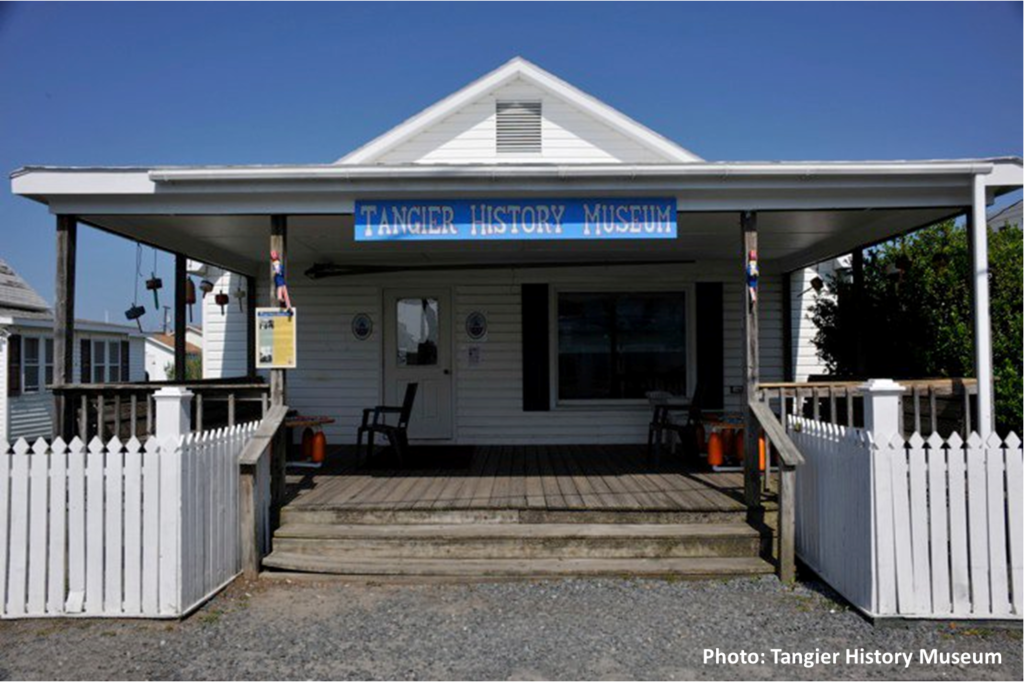
One of the last inhabited islands in the Chesapeake, Tangier Island has a lifestyle all its own. Visitors are welcome (including paddlers!) and we highly recommend a stop at the Tangier History Museum while you’re there. Talk to some locals and learn about the challenges and triumphs of island living. They even allow visitors free use of their canoes and kayaks – how convenient!
To discover event more historic sites and museums of rural, coastal Virginia, please visit:
https://www.northernneck.org/historical-heritage-sites/
https://visitesva.com/dobusinesscategory/museums/
https://visitmathews.com/historic-sites/
https://museumsofmiddlesex.com/
https://www.visitwilliamsburg.com/attractions-williamsburg-va/museums
About the Author: Laura Scharle lives on the Eastern shore of Maryland and is a frequent paddler in coastal Virginia. She is a Virginia certified ecotour guide and is an independent marketing contractor with a focus in ecotourism and heritage tourism. Laura can be reached through our Eastern Shore ecotour guide listings.
